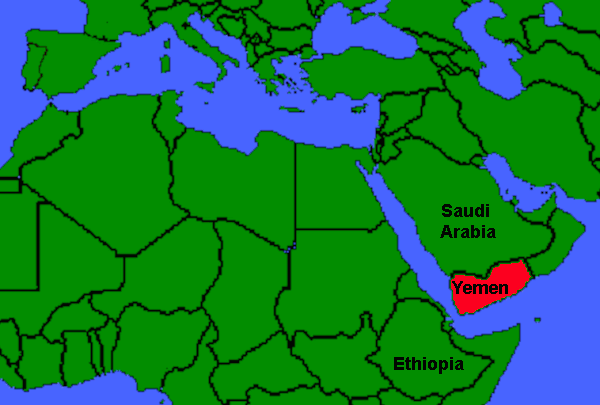
Circle the area on this map

C. When Saudi Arabia’s gross domestic product (GDP) is divided by its population, it works out to $44,300 per person a year. It is $2,300 a year in Ethiopia and $2,500 a year in Yemen, according to the CIA World Factbook. GDP is the value of all final goods and services produced within a nation in a given year, and it is used by economists to compare per-person welfare, living conditions and the use of resources across countries.
A. Saudi Arabia, Yemen and Ethiopia are all listed as being ruled by authoritarian regimes in the Democracy Index, which is compiled by the publisher of the Economist magazine. Norway ranked as having the strongest democracy in 2022, while Afghanistan was ranked as the world’s worst authoritarian regime. Oil-rich Saudi Arabia is an absolute monarchy that has been ruled by the Saud family since it was formed in 1932. About 750,000 Ethiopians live in Saudi Arabia.
D. Most of the world’s poorest nations are located south of Africa’s huge Sahara Desert. Ethiopians are among the thousands of people every year desperately fleeing violence, extreme poverty and hunger. They often give their life savings to smugglers to get them across dangerous deserts, jungles and seas to reach richer countries where they hope to live. Hundreds of migrants die on their journeys, and many more are turned back by the nations they are trying to enter.
D. Of the 10 richest nations in the world, six are in Western Europe and one each is in East Asia, the Middle East, North America and South America. Western Europe’s Liechtenstein ranks as the richest nation with a GDP per person of $139,100 a year, according to the CIA World Factbook. Of the world’s 10 poorest nations, nine are in Sub-Saharan Africa. The world’s poorest nation is Burundi with a GDP per person of $700 a year. That makes Liechtenstein about 199 times richer than Burundi.